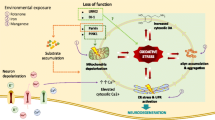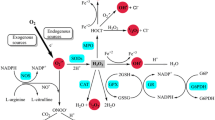Abstract.
Although there are a number of hypotheses to explain the pathobiochemistry of Parkinson's disease (PD), the one on oxidative stress (OS) has gained major interest. The evidence for OS participation as a cause of PD can be summarized as follows: 1) OS is involved in physiological aging, 2) there is ample evidence that OS is significantly enhanced in PD compared to age-matched healthy persons, 3) OS is an early feature of PD because OS-dependent aggregation of proteins in the form of advanced glycation end products can be imaged in Lewy bodies at a time in a person's life, when no phenotype of a neurodegenerative disorder is evident, 4) Experimental models of PD show OS and degeneration of dopaminergic neurons. The toxin-induced neurodegeneration can be blocked by antioxidants, and 5) Activated microglia, known to release free radicals and inflammatory cytokines, are present in brains of Parkinsonian patients.
In conclusion, a great body of evidence points to the view that OS is a major component underlying the pathobiochemistry of PD. Together a genetic disposition and endogenous/exogenous toxic events of various origins result in a synergistic cascade of toxicity which leads to dysfunction and finally to cell death of dopaminergic neurons. Again, OS plays a significant role in generating cell death signals including apoptosis.
Similar content being viewed by others
Author information
Authors and Affiliations
Additional information
Correspondence to: Dr. Eleni Koutsilieri
Rights and permissions
About this article
Cite this article
Koutsilieri, E., Scheller, C., Grünblatt, E. et al. Free radicals in Parkinson's disease. J Neurol 249 (Suppl 2), ii01–ii05 (2002). https://doi.org/10.1007/s00415-002-1201-7
Issue Date:
DOI: https://doi.org/10.1007/s00415-002-1201-7




